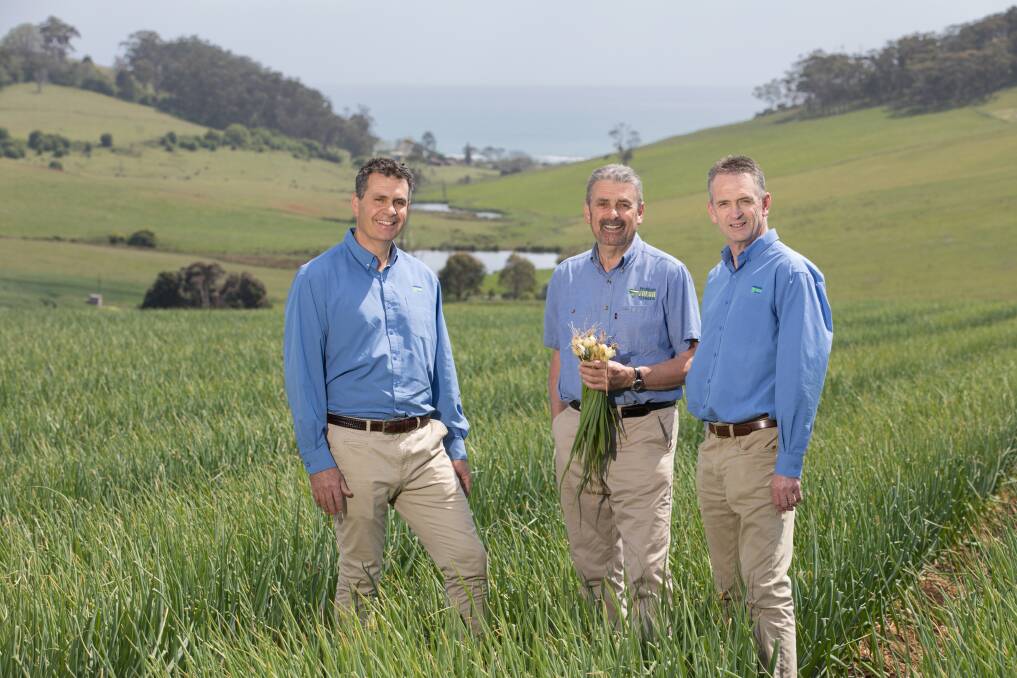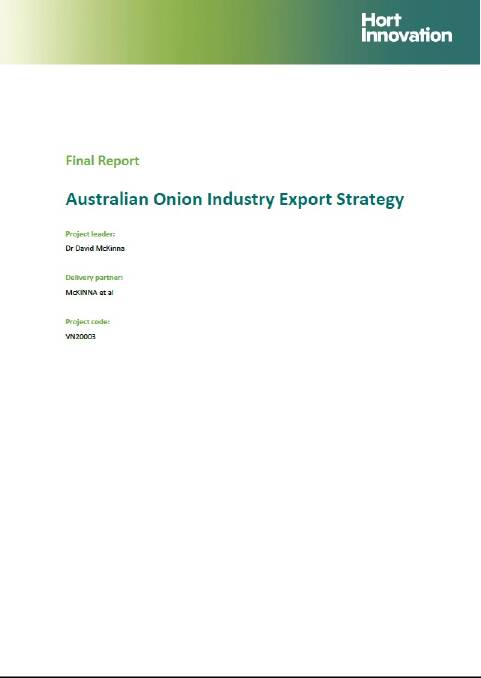
OTHER nations could be chomping down on more Aussie onions in the future, with growers back home set to benefit as well.
The onion industry has released a new export strategy detailing a strategic roadmap to guide the industry's export development investment decisions to ultimately improve both the export and domestic onions market.
It's hoped the direction will help pull onion exports up to where they have been in the past.
Although around 15 per cent of Australia's onion volume is exported, it used to be a much higher proportion of total production.
Strategic planning consultancy McKINNA et al has created a strategic five-year export plan 2021-2026 for the Australian onion industry as part of the Onion Industry Export Strategy.
The strategy was developed following a detailed market and competitor analysis, known as the Market Mapping Report with leading onion exporters and marketers also included in the consultation.
The project has resulted in two key outcomes:
- a clear understanding of which export markets offer growth opportunities and;
- industry consensus on export development and growth priority activities and investments.
The Export Strategy recognises the highly competitive global onion market which is dominated by India and China who set price expectations in many of the markets in which Australia competes.
Therefore, Australian exporters must compete based on premium quality and product integrity.
RELATED READING
Onion Export Strategy project lead Dr David McKinna said the strategy hopes to grow the onion export market as the opportunities exist; they just need to be explored.
"There is opportunity to grow our market, if industry exports, pressure is taken off the domestic onion market," Dr McKinna said.
"The strategy aims to reduce domestic price drops by taking small amounts of onions off the market and creating a knock-on effect, meaning there is a substantial cause for onion levy payers to invest in their exports, even if they are not exporting.
"If we sell on the export market at or below cost, the effect on the domestic market is great.
"This strategy details how Hort Innovation, and the onion industry should be investing the levy, as we are currently under-investing in export market development.
"To develop our international markets, it is all about improving relationships, ensuring we have trust and a good working relationship with those markets, particularly in Asia, as they turn to Australian onions."
It is estimated that there are less than 10 major grower/exporters in Australia that produce the bulk of Australia's export onions.
Tasmania, South Australia, and Western Australia are producing 97 per cent of the export volume, with Tasmanian onions accounting for 52pc of the total export trade.
"We need to continue to drive our advantages, as we do need to sell at a substantial premium to international markets, so having that quality edge is critical to putting Australian onions on the map," Dr McKinna said.
"I encourage growers to read the export strategy even if they're not exporting themselves, as it does give great insight into the industry and it is important for all growers to understand the importance of exports."
A grower's perspective
ONION grower Jim Ertler, Premium Fresh, Tasmania has been operating since the early 2000s and exporting for the past 14 years.
He said he believes the export strategy is key in supporting growers' exporting business plans and replacing the decreased demand in domestic markets due to recent oversupply.
"Over the last 18 months we have seen peaks in domestic market demand, but with the ongoing lockdowns and border closures that market has slowed things down for us," Mr Ertler said.
"Export markets have provided an alternative route for Premium Fresh in replacing domestic market lulls, but not without the challenges of shipping and fulfilling orders continuing.
"The Onion Export Strategy will, assist in building brand awareness and sustainability. This use of levy funds will support growers in their business strategies particularly if they are currently not exporting.
"There are no benefits in selling product below cost, we need to all work towards managing the volumes placed on the domestic market to ensure that it is not oversaturated.
"The strategy can be part of growers plans to manage supply volumes on the domestic market which will benefit all."
Mr Ertler said with building more sustainable export markets, one of the key recommendations of the strategy, Premium Fresh has taken a proactive stance and delved further into both the European and South-East Asian Markets.
"We are keen to explore our new markets particularly with the guidance and support of the export strategy findings," Mr Ertler said.
For more info on the about the project, click here.
Sign up here to Good Fruit and Vegetables weekly newsletter for all the latest horticulture news each Thursday...


